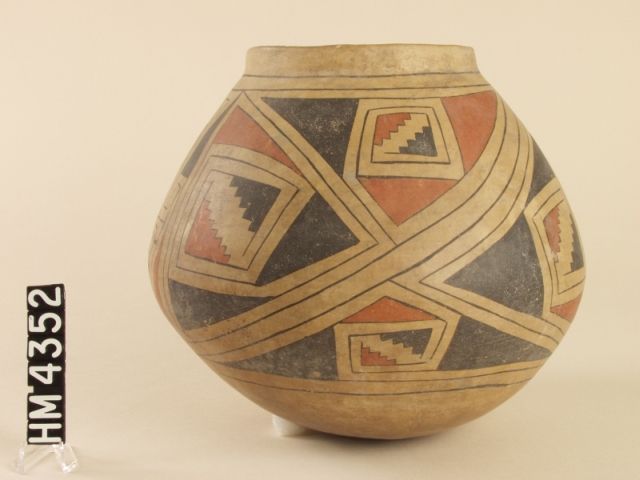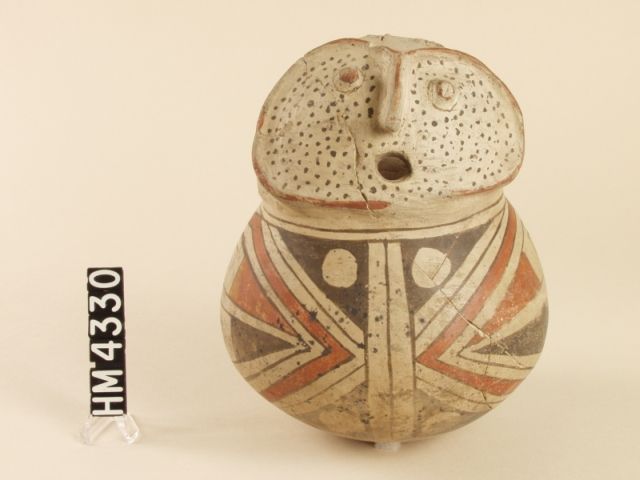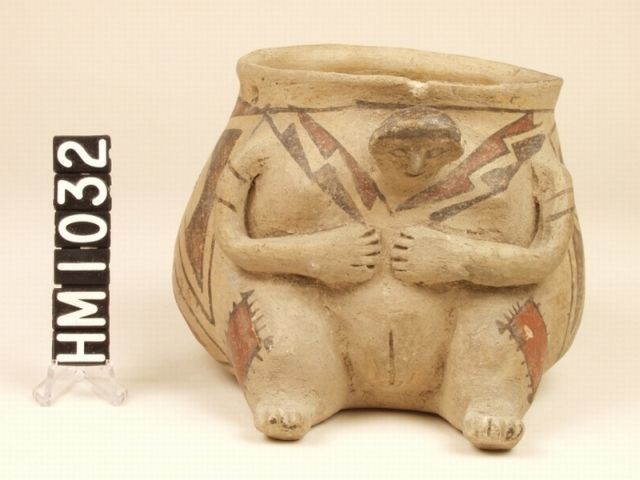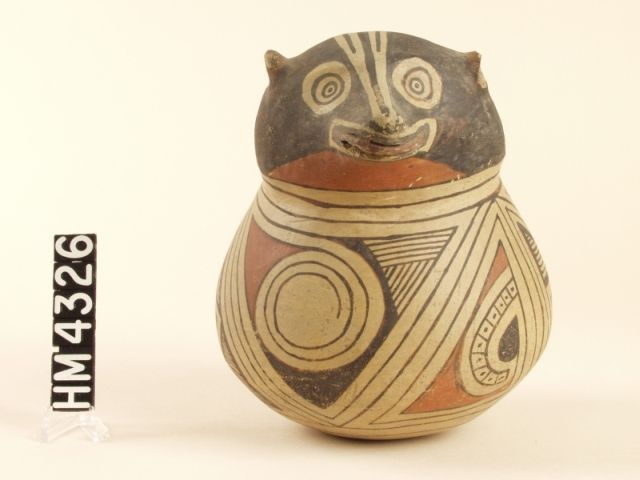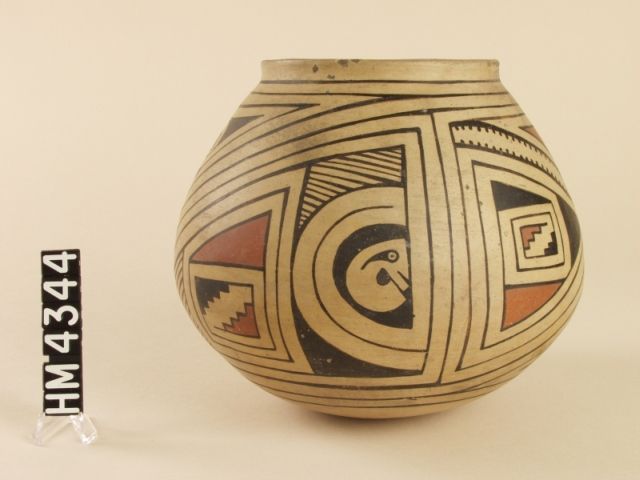Casas Grandes
Casas Grandes was located north of the traditional hub of the Mesoamerica world and south of the Pueblo cultures of Southwest. Casas Grandes, or “large houses” is used to denote an archaeological zone and the principal site in the region flourished between 1130 and 1450, before the settlements were precipitously abandoned. Archaeological evidence indicates that the Casas Grandes burned about 1340 and was rebuilt on a much larger scale with adobe multi-story building that boasted over 2000 rooms. Over 300 smaller settlements existed within a 30-mile radius of the main settlement.
In addition to the architectural remains of the site, Casas Grandes is associated with a distinctive form of pottery. These vessel often feature depictions of macaws and macaw pens, as well as plumed or horned serpents, evidence which points to contact with Mesoamerica. Other forms are effigy vessels with human figures, as well as animals, such as badgers, fish, and birds. Some merely are decorated with geometric designs. Many of these designs transcend time and can be found on contemporary Southwestern pottery today.
Vessel with Plumed Serpent Motif
AD 1060-1350
William P. Palmer Collection
Like many of the ceramic vessels from Casa Grandes, the design motifs point to the regions role as a crossroads between the Southwest and Mesoamerica. The plumed or feather serpent is common to many Mesoamerican civilizations, ranging from Olmec to Maya and Aztec.
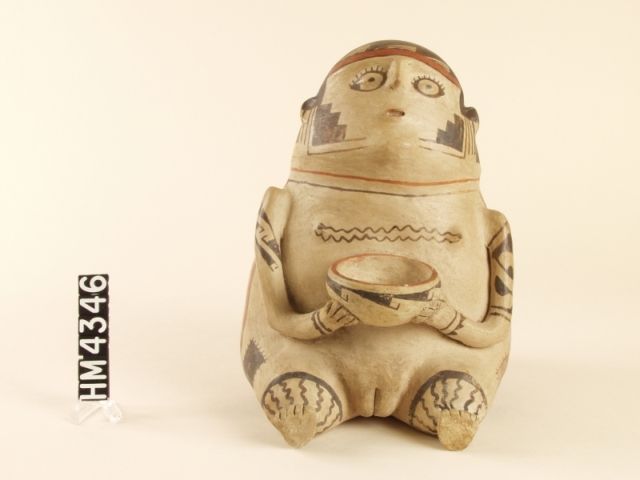
Effigy Vessel
AD 1060-1350
William P. Palmer III Collection


